How To Grow Succulents
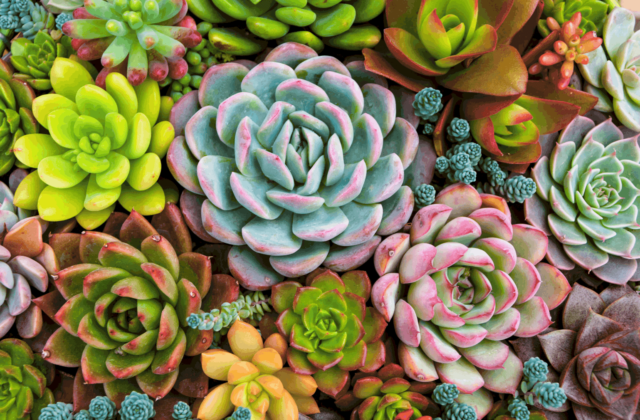
Introduction
Succulents are remarkable plants well-adapted to thrive in challenging conditions, characterized by limited water access, barren soil, intense sunlight, and high air temperatures. They have evolved unique features, developing fleshy leaves, stems, and roots composed of water-collecting tissues. This adaptation enables them to endure periods of temporary drought, making them resilient in harsh environments. Succulents are often categorized into shoot, leaf, and root succulents. Learning how to grow succulents is a delightful journey into the world of resilient and low-maintenance plants, perfect for both indoor and outdoor settings.
Among these categories, leaf succulents are currently the most popular. These plants boast waxy leaves, a protective layer against water loss. Additionally, they exhibit a shallow yet extensive root system, enabling rapid surface water absorption. Leaf succulents are commonly found in semi-desert regions characterized by low but consistent rainfall, showcasing their adaptability to such environments. The popularity of these plants is attributed to their fascinating features and the ease with which they can be cultivated in various settings. In this article, you will delight in the meditative process of learning how to grow succulents through leaf propagation, witnessing new life sprout from individual leaves, each with the potential to become a thriving succulent.
Succulents – Species That Are Worth Having At Home
Succulents, renowned for their easy cultivation, have become favored choices for indoor potted plants. Aloe is a prime example, featuring green, fleshy leaves that store valuable juice. The pulp extracted from aloe leaves is highly sought after for cosmetic and skincare applications, making it a rewarding choice for cultivation.
Among the recent trends in houseplants, zamioculcas or Rowley’s Senecio have gained popularity. Despite their appearance not distinctly revealing their succulent nature, they do indeed belong to the succulent family. This highlights the diverse range of succulents that have found their way into interior décor, offering both aesthetic appeal and low-maintenance care for indoor plant enthusiasts. Exploring the techniques of how to grow succulents in containers opens up creative possibilities for displaying these unique plants on windowsills, desks, or even as part of stunning arrangements.
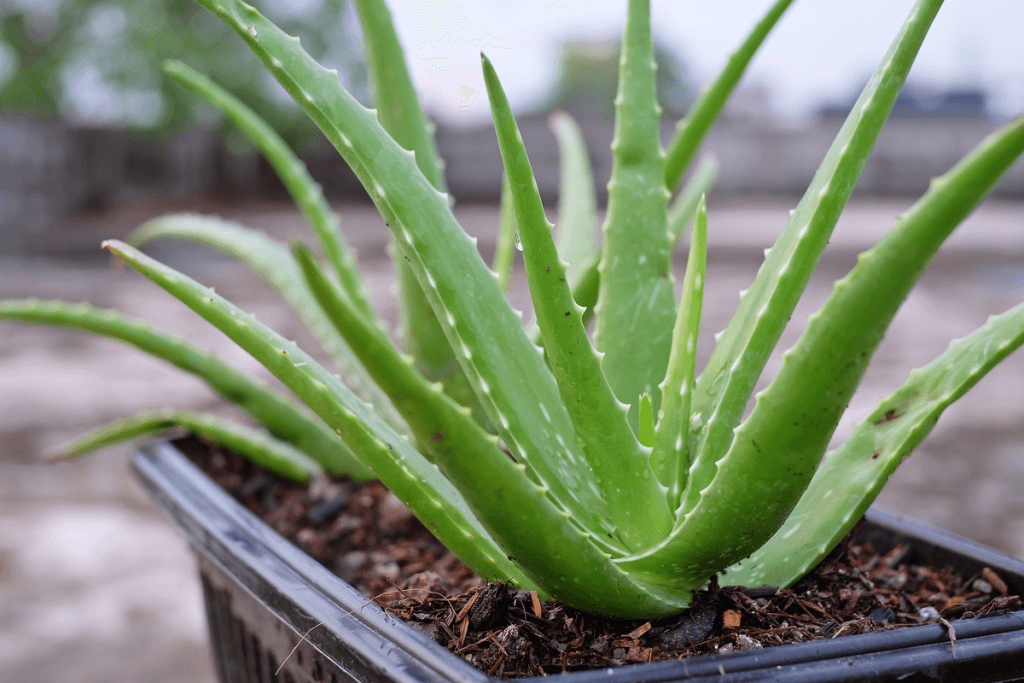
A prevalent mistake in succulent care is overwatering, which can be detrimental to most succulents. These plants, adapted to arid conditions, are not accustomed to frequent watering and can suffer if their soil remains consistently moist.
Despite their hardy nature, certain succulents also produce vibrant flowers that enhance their decorative appeal. Examples of flowering succulents include Kalanchoe and schlumbergera, commonly found in many stores. Schlumbergera is also known as the Christmas cactus, showcasing its tendency to bloom during the winter holiday season, adding a festive touch to indoor spaces. These flowering succulents not only offer visual interest but also bring a burst of color to their surroundings.
Potted Succulents – Cultivation Rules
Understanding the essentials of how to grow succulents involves providing well-draining soil, ample sunlight, and a careful approach to watering, ensuring their health and vibrancy.
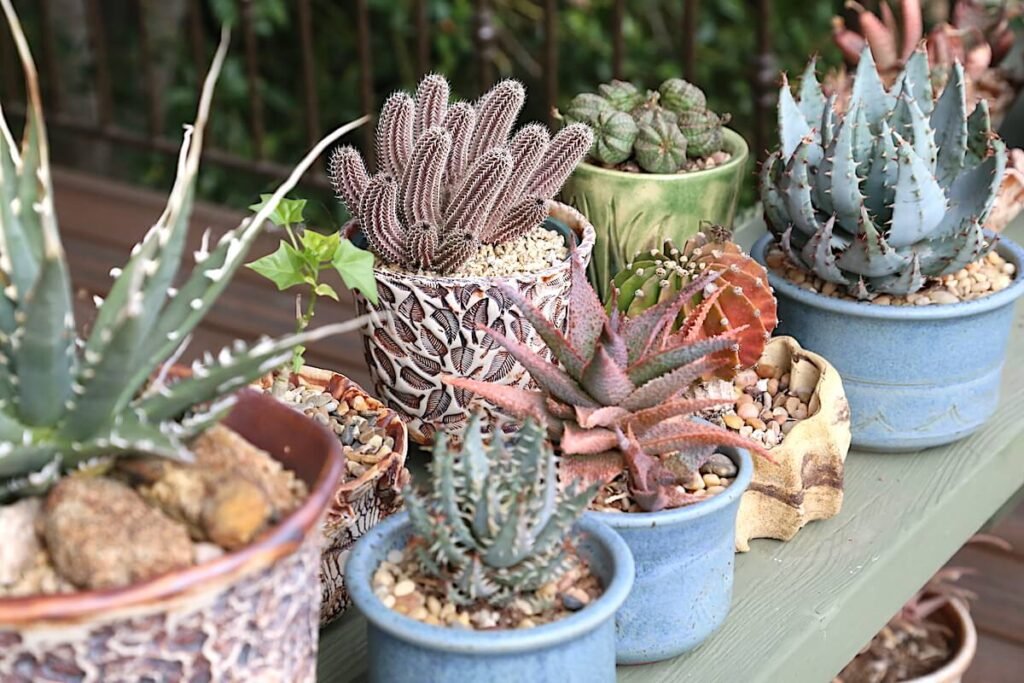
- Cultivating potted succulents successfully involves providing them with specific environmental conditions. These plants thrive in direct sunlight, requiring an adequate amount of water and high air temperatures during their active growth period, which typically occurs in spring and summer. Conversely, during the dormant phase in autumn and winter, succulents benefit from lower air temperatures.
- Equally important is the choice of a well-draining substrate. Using a light and permeable soil mixture is crucial for preventing waterlogged conditions that succulents dislike. Fertilizing during the summer months further enhances their growth and overall condition, providing essential nutrients for their development.
- By incorporating these factors into the care routine, you can create optimal conditions for the effective cultivation of succulents in your home, resulting in beautiful growth and healthy plants.
Suitable Substrate For Succulents
Creating a suitable soil mix is crucial for the well-being of succulents, and it should be highly permeable to facilitate efficient drainage and protect the plant’s roots from rot. While ready-made succulent substrates are available in gardening stores, you can also prepare a mix at home.
Here’s a simple recipe for a succulent soil mix:
- Combine one part high-temperature roasted universal plant soil (to eliminate parasites) with one part gravel or expanded clay.
- Mix in coarse-grained sand with a granulation of over 1 mm.
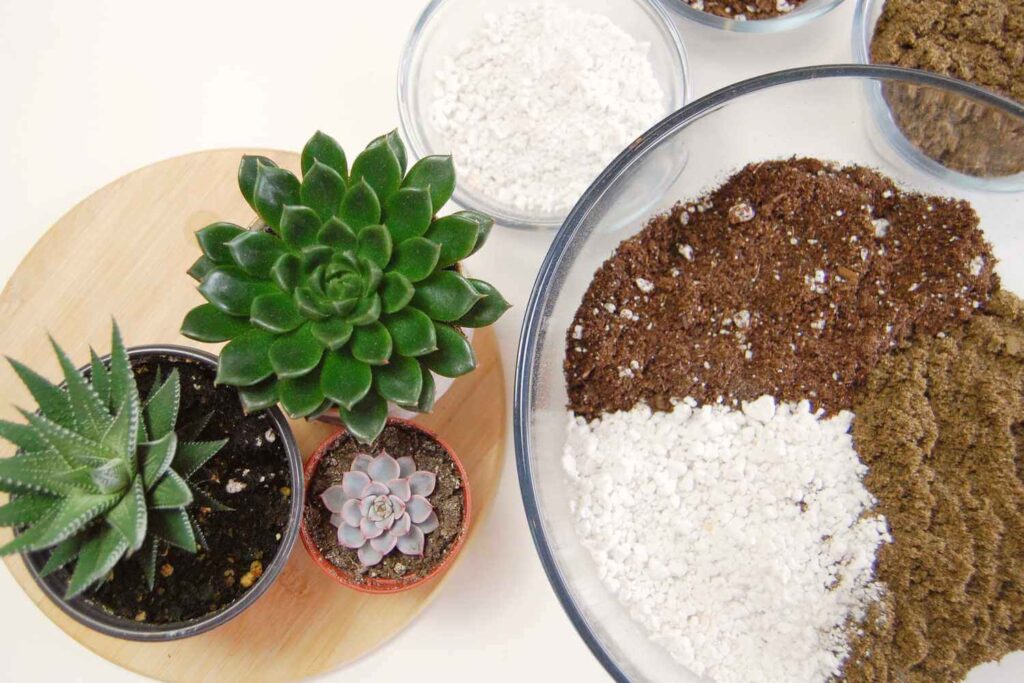
These proportions create a well-draining and aerated substrate, promoting optimal conditions for succulent growth.
Regarding pH levels, although succulents can tolerate varying soil pH, they tend to thrive in slightly acidic conditions. While it might not be critical, it’s worth considering when purchasing soil or adjusting watering practices for your succulents to create an environment where they can flourish.
Watering Succulents
Proper watering is crucial for the health of succulents, and indeed, they are more resilient to drought than excessive watering. Here are some key watering guidelines for succulents:
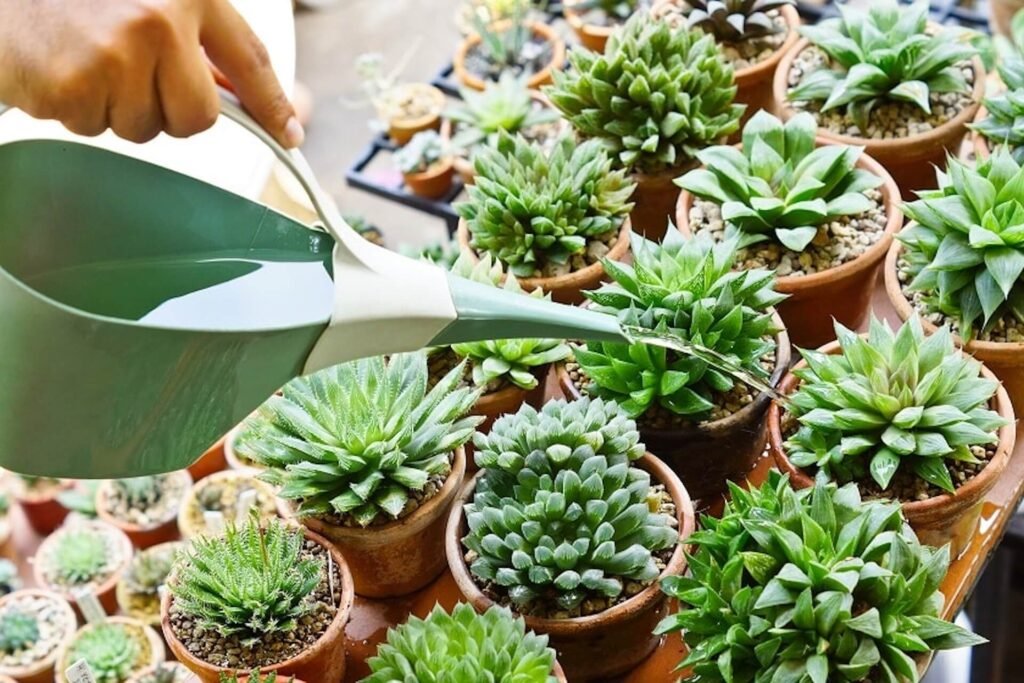
- Infrequent and Sparingly: Succulents should be watered infrequently and sparingly. It’s essential to allow the soil in the pot to dry out between watering sessions, preventing constant wetness. This is because succulents are adapted to periods of drought.
- Seasonal Variations:
- In spring and summer, water approximately once a week.
- During the vegetative period (autumn and winter), reduce watering to around once a month.
- Initiate Watering Reduction in Fall:
- For home cultivation, start limiting watering at the end of October or the beginning of November. This helps the plant gradually enter a rest period in preparation for the upcoming season.
- Water Source:
- Regularly water with small amounts of rainwater or boiled tap water. Rainwater and boiled tap water, which tend to be slightly acidic, yield optimal cultivation results.
By following these watering practices, you can create an environment that promotes the well-being of your succulents, ensuring they receive the right amount of moisture without risking root rot from overwatering.
A Stand For Succulents
Gardeners often seek expert advice on how to grow succulents successfully, appreciating the diversity of these water-storing plants that thrive in various climates and conditions. Proper placement of succulents is crucial to their growth and overall well-being. Consider the following guidelines for optimal positioning during different seasons:
Intense Growth Period (Spring and Summer):
- Sunlight and High Temperature:
- Place succulents in locations with plenty of sunlight and high temperatures during spring and summer.
- Avoid dark areas or north-facing windows, as insufficient light may hinder blooming, and leaves and shoots may discolor.
- Mastering how to grow succulents indoors involves finding the perfect balance of sunlight and air circulation, transforming your home into a sanctuary of green resilience.
- Ideal Locations:
- Optimal locations include a greenhouse, the back of a balcony, or indoors where gentle sunlight permeates.
- Be cautious about exposing succulents to direct, intense sunlight that could lead to burns on certain species.
Vegetative Period (Autumn and Winter):
- Cooler, Bright Place:
- During the vegetative period in autumn and winter, move succulents to a cooler yet still bright location.
- This transition supports their natural growth patterns during the dormant season.
By aligning the placement of succulents with their seasonal needs, you can create an environment that encourages healthy growth, vibrant colors, and overall flourishing throughout the year. The key to successful how to grow succulents lies in finding the right balance of sunlight exposure, as these plants often flourish in bright, indirect light.
Fertilizers For Succulents
While succulents are known for their resilience and ability to thrive in barren soil, providing them with regular watering and occasional fertilization is beneficial for their well-being, especially when grown indoors. Here are some tips for fertilizing succulents:
- Choose Water-Soluble Fertilizers:
- Opt for water-soluble fertilizer concentrates or liquid nutrients when fertilizing succulents. These are easy to dilute and apply.
- Balanced Nutrient Composition:
- Select fertilizers with a higher concentration of potassium and phosphorus, and a lower amount of nitrogen. This nutrient balance promotes flowering and discourages excessive plant growth.
- Caution with Nitrogen:
- Be cautious with nitrogen, as an excess can lead to overly lush growth, potentially hindering flowering and the development of the characteristic waxy layer on the leaves.
- Moderate Application:
- Apply fertilizer sparingly, and avoid over-fertilizing, as succulents generally have lower nutrient requirements compared to other plants.
By following these guidelines, you can provide the necessary nutrients to support the health and vitality of your succulents without causing adverse effects. Remember to adjust the frequency and concentration of fertilization based on the specific needs of the succulent species you are cultivating.
How Often And When Should You Fertilize Succulents?
Achieving successful cultivation results for succulents involves strategic fertilization, especially during periods of intensive growth. Here are some guidelines for fertilizing succulents:
- Timing of Fertilization:
- Fertilize succulents during intensive growth, typically from the beginning of May to the end of August.
- Frequency:
- Apply small doses of nutrients approximately every two or three weeks during the active growth phase. This consistent schedule helps provide the necessary nutrients without overwhelming the plants.
- Exceptions for Freshly Planted Succulents:
- Newly planted succulents should be exempt from fertilization. The root ball of freshly planted succulents is in a growth phase where it may not effectively absorb nutrients from the soil.
By adhering to these guidelines, you can optimize the nutrient supply for your succulents during their growth period, promoting healthy development and vitality. It’s important to tailor the fertilization approach based on the specific needs of the succulent species and environmental conditions.
Repotting Succulents
Your guidance on repotting and transplanting Crassula plants and other succulents is quite thorough and helpful. Here’s a summary of the key points:
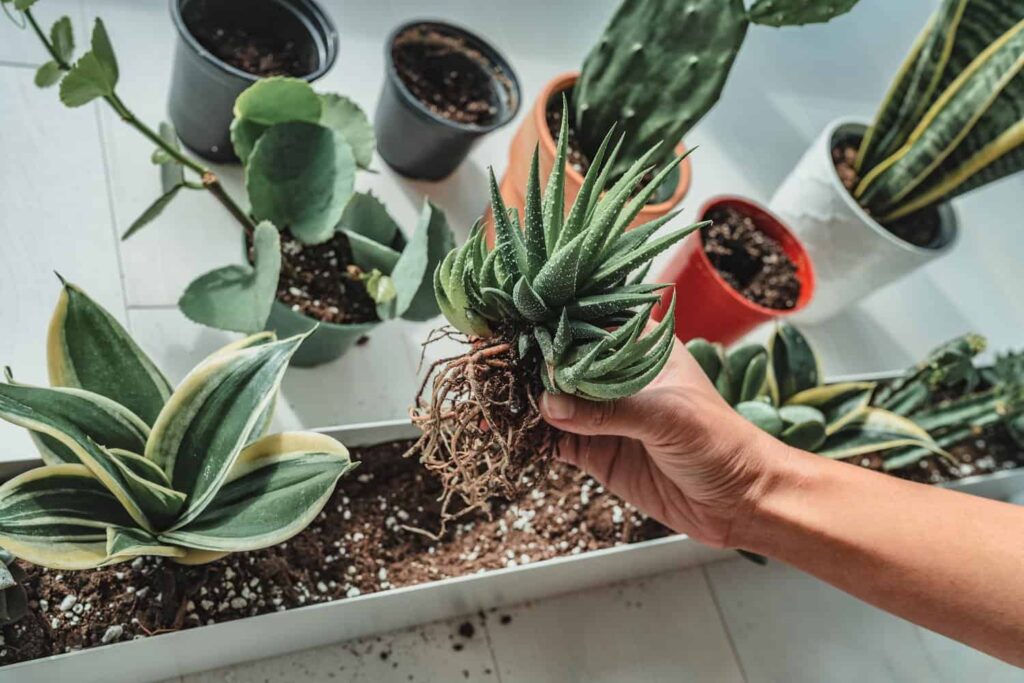
- Frequency of Repotting:
- Crassula plants and succulents, in general, do not require frequent repotting. Repot every 3-4 years when the current pot becomes too tight, and roots protrude above the ground surface or through drainage holes.
- Timing for Repotting:
- The ideal timing for repotting is in the spring, before the intensive growth period. However, if you have a new plant, the time of year is less critical.
- Preparation for Repotting:
- Succulents planned for repotting should not be watered for several days to ensure the root ball is dry.
- After gently removing soil from the roots, transplant the succulent into a new, well-draining substrate.
- Choosing a Pot:
- Select a pot a few centimeters larger in diameter than the current one, with drainage holes at the bottom.
- Place a drainage layer of expanded clay or gravel at the pot’s bottom, followed by a dry or slightly moistened succulent substrate.
- Post-Transplant Care:
- Avoid watering succulents for a few days after transplanting.
- Refrain from fertilizing for several months or until the next growth period (spring-summer).
By following these guidelines, you promote the health and well-being of your Crassula plants and other succulents during the crucial process of repotting or transplanting.
Succulents In Winters
Your guidance on caring for thermophilic succulents during the dormant period is informative and aligns well with the specific needs of these plants. Here’s a recap of the key points:
- Dormant Period (Autumn and Winter):
- Provide thermophilic succulents with a lower ambient temperature during the dormant period, aiming for an optimal air temperature of approximately 10 degrees Celsius.
- Reduced Watering and Fertilization:
- Water succulents very sparingly during winter, with a maximum frequency of once a month.
- Cease fertilization during the dormant period.
- Late Spring Care:
- Increase watering frequency in late spring as the plant enters the active growth phase.
- Gradually raise the air temperature in which the plant resides.
- Fertilization Approach:
- Feed succulents with fertilizer during the active growth phase.
- Choose a fertilizer with a small amount of nitrogen but a higher concentration of potassium and phosphorus.
- Replanting Considerations:
- Late spring is an opportune time for replanting if necessary.
By adapting care practices to the specific needs of thermophilic succulents during different seasons, you provide optimal conditions for their growth, health, and overall well-being.
Succulent In A Pot – Care Mistakes
Why Does A Succulent Lose Its Leaves?
Succulents losing their leaves can be attributed to various factors, and your explanation provides a comprehensive overview. Here’s a breakdown of the reasons why succulents may lose their leaves:
- Improper Care:
- Lack of Light:
- Inadequate light may cause leaf succulents to develop elongated shoots in an attempt to reach sunlight, ultimately resulting in leaf loss.
- Overwatering:
- Excessive watering can lead to root rot, causing wilting and the shedding of leaves from the shoots.
- Too Tight Pot:
- A pot that is too tight can restrict the succulent’s growth, potentially causing leaf loss.
- Low Temperature:
- Temperatures below the plant’s tolerance (minimum 10 degrees Celsius) can lead to leaf loss.
- Lack of Light:
- Age of the Plant:
- Succulents may naturally shed leaves from woody parts of the shoots as they age.
Understanding and addressing these factors can help prevent or mitigate leaf loss in succulents, promoting their overall health and vitality. Adjusting care practices, such as providing adequate light, proper watering, and suitable temperatures, is key to maintaining thriving succulents.
Why Does A Succulent Turn Yellow?
The discoloration of succulents, turning yellow or brown, can indeed be indicative of various issues. Here’s a breakdown of potential causes:
- Insufficient Irrigation:
- Too rare or insufficient irrigation, especially during prolonged droughts, can lead to wilting, wrinkling, and yellowing of the succulent.
- pH of the Soil:
- Planting succulents in soil with an incorrect pH (neutral or alkaline) can contribute to yellowing. Non-acidic substrates can hinder the proper absorption of iron, essential for chlorophyll production and green leaf color.
- Water Quality:
- Watering succulents with alkaline tap water can also impact the plant’s ability to absorb iron, affecting chlorophyll production and causing discoloration.
Understanding these factors allows for targeted corrective actions. Adjusting watering practices, using well-draining and slightly acidic soil, and ensuring appropriate water quality can help maintain the vibrant and healthy appearance of succulents. Regular monitoring and responsive care are essential for addressing issues promptly. Cultivating a green thumb involves not only knowing how to grow succulents but also appreciating their unique features, such as fleshy leaves and striking geometric shapes, that make them stand out in any garden.
Consider using decorative rocks or gravel as a top dressing for your succulents. This not only enhances their aesthetic appeal but also serves practical functions such as regulating soil moisture and preventing weed growth. It adds a distinctive touch to the presentation of your succulents while offering practical benefits.
Maintenance Tip
Succulents At Home – Why Is It Worth Having Them?
Succulents, robust and vibrant in green, serve as fantastic additions to interior decor. Embracing the urban jungle trend, which encourages bringing nature into our living spaces, applies equally to both small and large succulents. No longer reserved for those with limited plant care skills, cacti, and succulents have evolved into cherished and charming ornaments for windowsills and tables. With attentive care and proper feeding, they can flourish, showcasing lush and hearty foliage, and in some cases, gracing you with colorful and stylish blooms.
Embrace sustainability by exploring eco-friendly practices in how to grow succulents, utilizing recycled containers and organic soil amendments for a greener, more mindful garden. Gardening enthusiasts often share tips on how to grow succulents in rock gardens, showcasing their ability to thrive in arid conditions and add texture to outdoor landscapes. Feel free to leave a comment for us and the world!
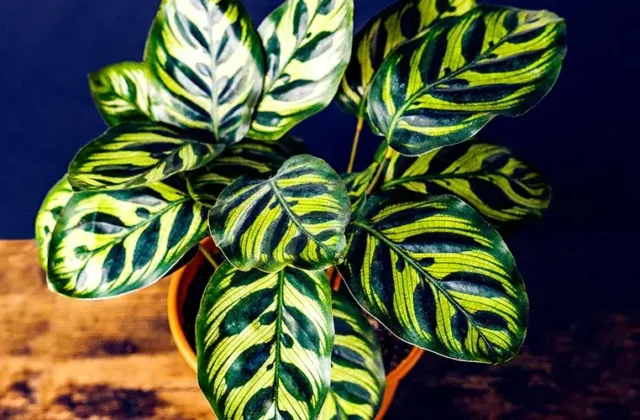
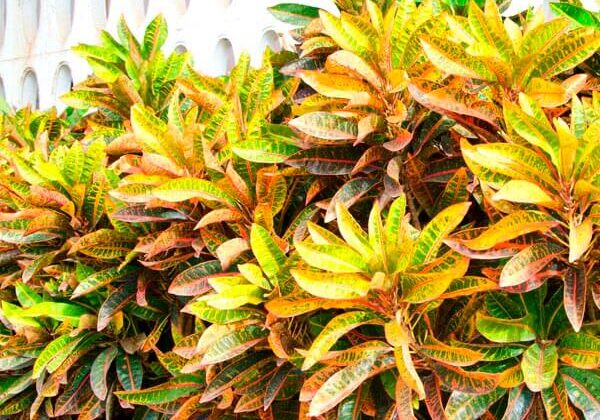
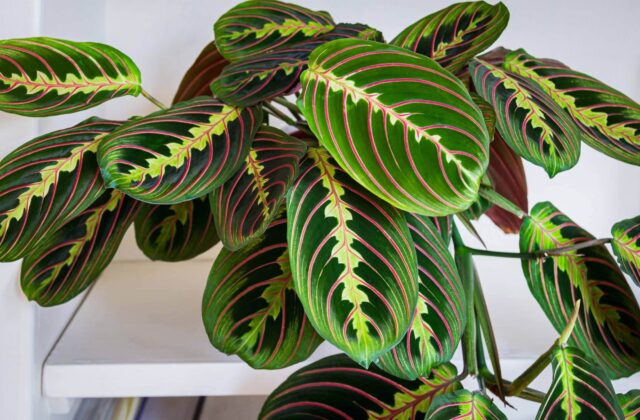
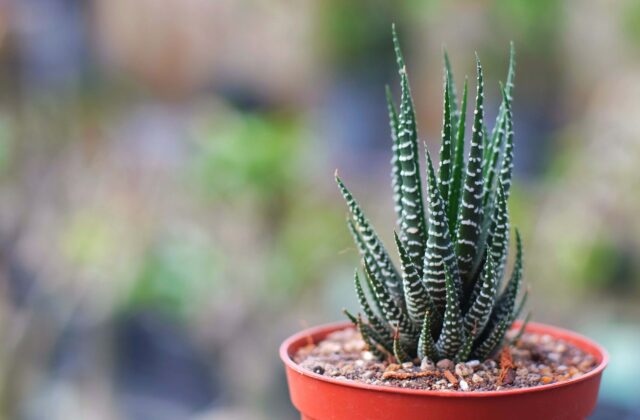
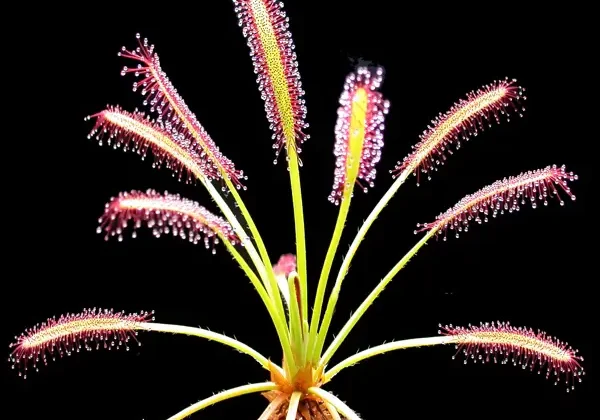
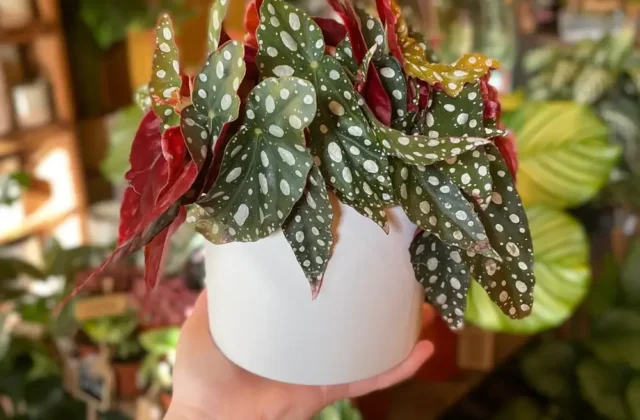
5 comments
Im not positive the place you are getting your info, but good topic. I needs to spend a while studying much more or working out more. Thanks for wonderful info I used to be on the lookout for this info for my mission.
You made some good points there. I did a search on the subject and found most guys will approve with your website.
Wow superb blog layout How long have you been blogging for you make blogging look easy The overall look of your site is magnificent as well as the content
Your point of view caught my eye and was very interesting. Thanks. I have a question for you.